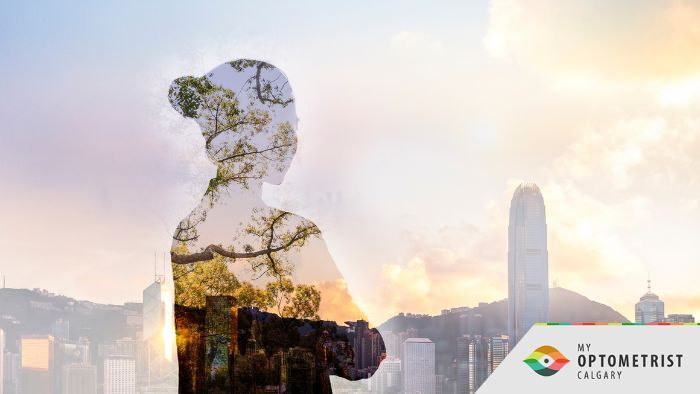
Orthokeratology (Ortho-K) presents a revolutionary vision correction method. Through specially designed lenses worn overnight, it gently reshapes the cornea, offering clear daytime vision without surgery or glasses. Ortho-K benefits include freedom from daytime eyewear, non-invasiveness, myopia control potential, and enhanced peripheral vision. As technology advances, Ortho-K's role in the future of vision correction grows, offering hope for those seeking non-surgical solutions. While individual factors and considerations exist, Ortho-K stands as a promising beacon on the horizon of clear, non-invasive, and reversible vision correction.
For those who have navigated the world with corrective lenses or contemplated surgical options, the idea of waking up with clear vision might feel like a distant dream. However, with the rise of Orthokeratology, often referred to as Ortho-K, that dream is becoming a reality. This innovative vision correction method offers the promise of clear vision without surgery or daytime eyewear. In this article, we delve into the world of Ortho-K, exploring its mechanics, benefits, and potential as the future of nonsurgical vision correction.
Orthokeratology involves the use of specially designed rigid contact lenses to reshape the cornea – the transparent front surface of the eye – overnight. These lenses, commonly referred to as Ortho-K lenses, gently reshape the cornea's curvature, temporarily correcting refractive errors such as myopia (nearsightedness), hyperopia (farsightedness), and astigmatism. The result is improved vision without the need for corrective lenses during waking hours.
The Ortho-K process begins with an eye examination to determine the individual's suitability for the procedure. If deemed appropriate, custom-fitted Ortho-K lenses are prescribed. These lenses are worn overnight during sleep, allowing the cornea to gradually take on the desired shape. Upon waking, the lenses are removed, and the individual enjoys improved vision throughout the day. Regular follow-up appointments are essential to monitor progress and ensure optimal results.
Benefits of Ortho-K
Daytime Freedom: One of the most compelling advantages of Ortho-K is the freedom it offers during the day. Individuals can experience clear vision without relying on eyeglasses or contact lenses, making activities like swimming, sports, and outdoor adventures much more convenient.
Non-Invasive: Unlike surgical procedures like LASIK, Ortho-K is non-invasive. It doesn't involve cutting or reshaping the cornea permanently. This makes it an appealing option for those who are hesitant about undergoing surgical interventions.
Myopia Control: Ortho-K has shown promise in controlling the progression of myopia in children and adolescents. The corneal reshaping can help slow down the elongation of the eyeball, a key factor in myopia progression.
Reversible: If an individual decides to discontinue Ortho-K, the effects are reversible. The cornea gradually returns to its original shape, and the individual's previous refractive error may reappear. This offers a level of flexibility that surgical procedures do not.
Enhanced Peripheral Vision: Some Ortho-K lens designs have been shown to improve peripheral vision. This can be particularly beneficial for athletes and individuals engaged in activities that require optimal awareness of their surroundings.
The Future of Vision Correction
As technology continues to advance, Ortho-K is poised to play an increasingly significant role in the world of vision correction. Researchers are exploring new lens materials and designs to optimize the Ortho-K experience, making it more comfortable and effective. Additionally, Ortho-K's potential to control myopia progression has garnered attention, particularly in an era where myopia rates are on the rise.
Considerations and Limitations
While Ortho-K offers remarkable benefits, it's important to acknowledge its considerations and limitations. The success of Ortho-K depends on factors such as corneal health, prescription strength, and individual commitment to the nightly wear routine. Some individuals may experience discomfort during the initial adjustment phase, but this typically subsides as the eyes adapt to the lenses.
In a world where technological advancements are redefining our possibilities, Ortho-K stands out as a beacon of hope for those seeking clear vision without the constraints of glasses or the risks of surgery. With its non-invasive nature, reversible effects, and potential to control myopia progression, Ortho-K is carving a path toward the future of nonsurgical vision correction.
As the realm of optometry continues to evolve, the innovation and promise of Ortho-K capture our imagination. While it may not be suitable for everyone, it offers a tantalizing glimpse into the future of clear vision – a future where the dream of waking up to a world of visual clarity becomes an attainable reality.
Written on behalf of My Optometrist Calgary.
FAQ
Q: How does Ortho-K work?
A: Ortho-K lenses gently reshape the cornea while you sleep. Upon waking, the lenses are removed, and your vision remains improved throughout the day.
Q: Who is a suitable candidate for Ortho-K?
A: Individuals with myopia, hyperopia, or astigmatism are potential candidates for Ortho-K. An eye examination determines suitability.
Q: Is Ortho-K comfortable?
A: Some discomfort may occur during the initial adjustment period, but it typically lessens as your eyes adapt to the lenses. Regular follow-ups ensure optimal comfort and results.